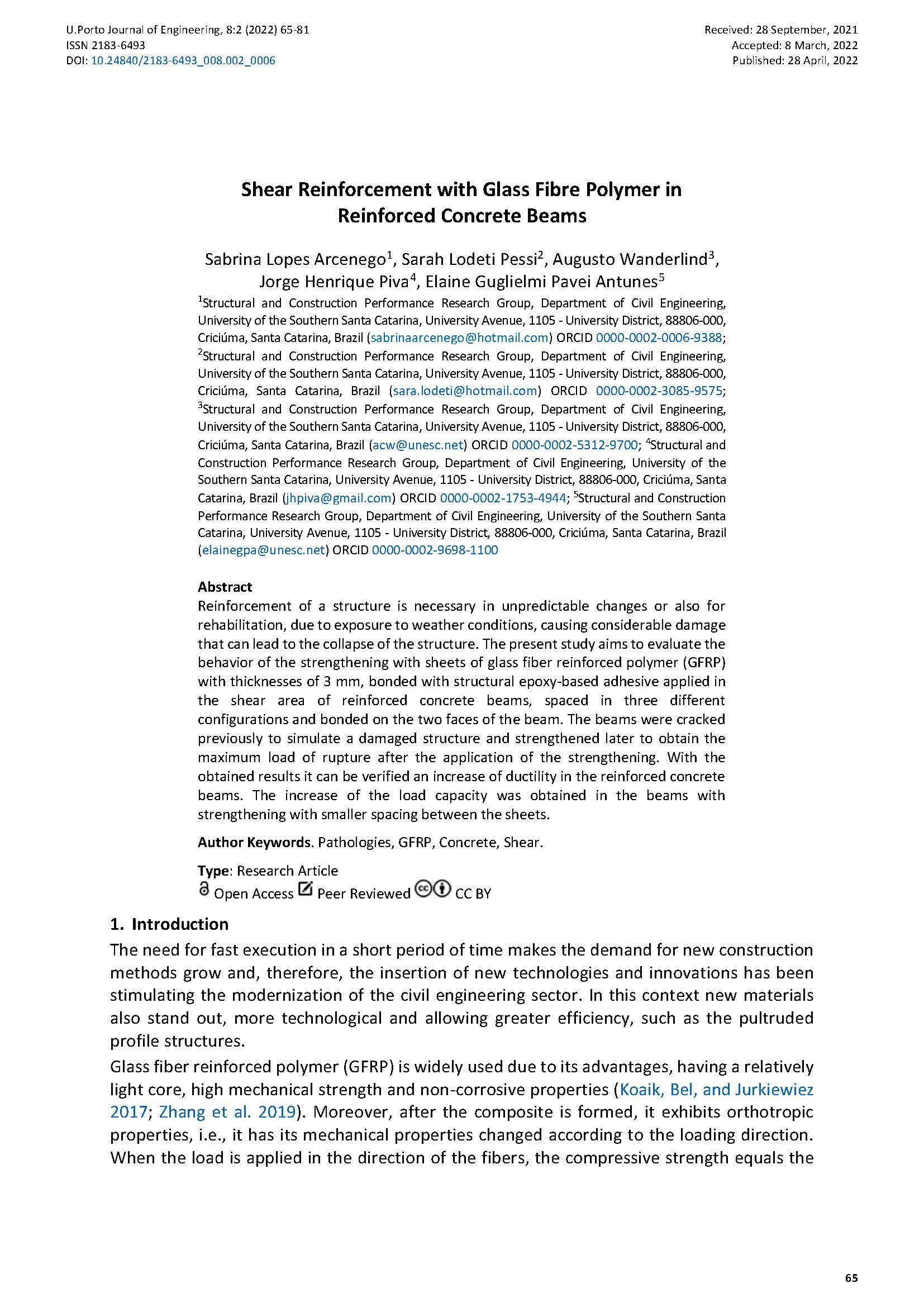Shear Reinforcement with Glass Fibre Polymer in Reinforced Concrete Beams
Main Article Content
Abstract
Reinforcement of a structure is necessary in unpredictable changes or also for rehabilitation, due to exposure to weather conditions, causing considerable damage that can lead to the collapse of the structure. The present study aims to evaluate the behavior of the strengthening with sheets of glass fiber reinforced polymer (GFRP) with thicknesses of 3 mm, bonded with structural epoxy-based adhesive applied in the shear area of reinforced concrete beams, spaced in three different configurations and bonded on the two faces of the beam. The beams were cracked previously to simulate a damaged structure and strengthened later to obtain the maximum load of rupture after the application of the strengthening. With the obtained results it can be verified an increase of ductility in the reinforced concrete beams. The increase of the load capacity was obtained in the beams with strengthening with smaller spacing between the sheets.
Downloads
Article Details

This work is licensed under a Creative Commons Attribution 4.0 International License.
Authors who publish with this journal agree to the following terms:
- Authors retain copyright and grant the journal right of first publication with the work simultaneously licensed under a Creative Commons Attribution License that allows others to share the work with an acknowledgement of the work's authorship and initial publication in this journal.
- Authors grant the journal the rights to provide the article in all forms and media so the article can be used on the latest technology even after publication and ensure its long-term preservation.
- Authors are able to enter into separate, additional contractual arrangements for the non-exclusive distribution of the journal's published version of the work (e.g., post it to an institutional repository or publish it in a book), with an acknowledgement of its initial publication in this journal.
- Authors are permitted and encouraged to post their work online (e.g., in institutional repositories or on their website) prior to and during the submission process, as it can lead to productive exchanges, as well as earlier and greater citation of published work (See The Effect of Open Access).

